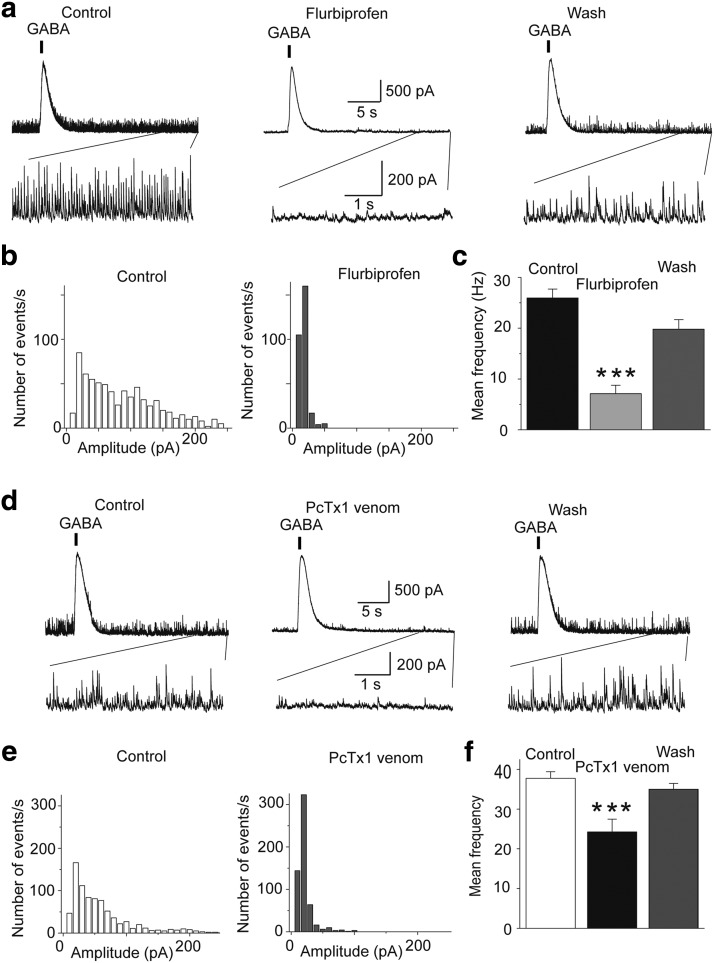Figure 4.
Antagonism of ASIC1a reduces spontaneous inhibitory activity. Recordings were obtained from BLA principal cells in the presence of CNQX (10 μm), d-AP5 (50 μm), and SCH50911 (10 μm), at Vh = +30 mV. a, sIPSCs in control medium, in the presence of bath-applied flurbiprofen (2 mm), and after a 10 min wash. Flurbiprofen suppressed sIPSCs, with no significant effect on the amplitude of GABAA-mediated currents evoked by pressure-applied GABA (400 μm GABA, 200 ms duration of pressure application). The bottom traces show, in an expanded view, the last 5 s of the upper traces. b, Amplitude-frequency histograms for sIPSCs in control medium and in the presence of 2 mm flurbiprofen, for the cell shown in a (bin size, 10 pA). c, Group data of the frequency of sIPSCs in control medium and in the presence of 2 mm flurbiprofen (n = 7 neurons from 4 rats, ***p < 0.001 when compared with the control). d, sIPSCs before, during, and after bath-applied PcTx1 venom (1:1000 dilution of the 100 μl lyophilized, milked venom). PcTx1 suppressed sIPSCs, with no significant effect on the amplitude of GABAA-mediated currents evoked by pressure-applied GABA. The bottom traces show, in an expanded view, the last 5 s of the upper traces. e, Amplitude-frequency histograms for sIPSCs in control medium and in the presence of PcTx1, for the cell shown in d (bin size, 10 pA). f, Group data of the frequency of sIPSCs in control medium and in the presence of PcTx1 (n = 4 neurons from 3 rats; **p < 0.01 when compared with the control).

